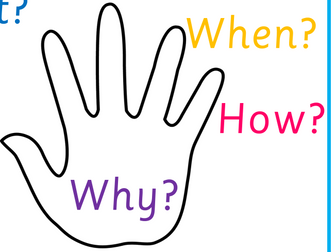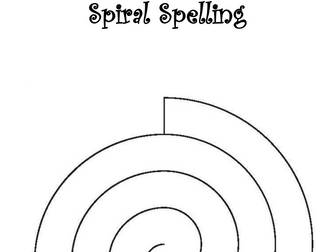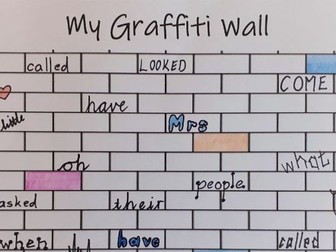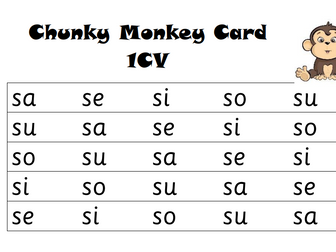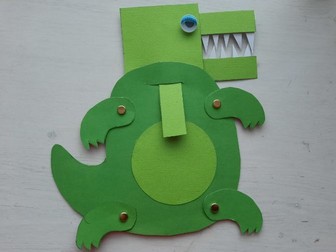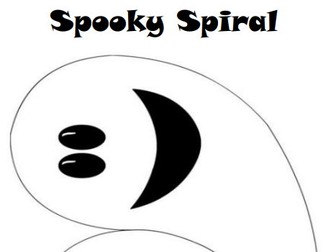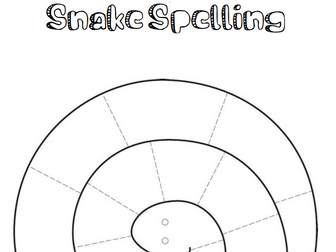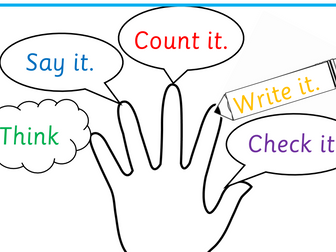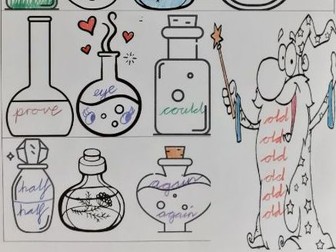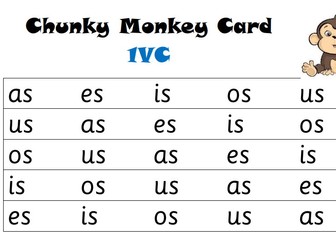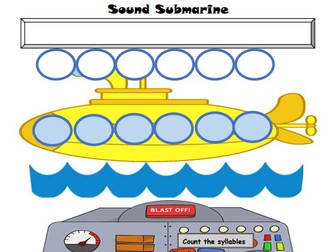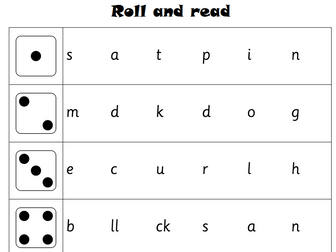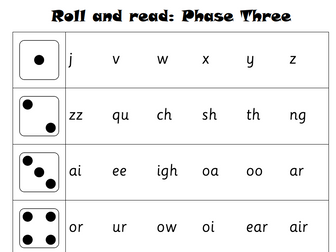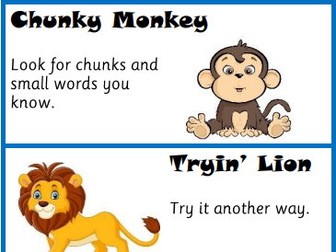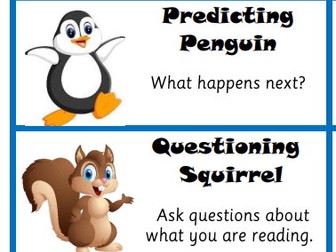Spiral Spelling
<p>Children write their spelling words into the spiral then they cut it out and hang it up. This is a great resource to motivate children or to engage children who need novel experiences.</p>
Graffiti Wall Spelling
<p>Children write their spelling words on the graffiti wall using any font and as many colours as possible.</p>
Chunky Monkey CV Blends: Consonant, Vowel
<p>Chunky Monkey blending cards are used to help children struggling to blend. The child starts with card number 1 and only moves onto card 2 when they can read the blends on the card fluently.</p>
<p>The child reads each blend from left to right. Repeat this activity regularly until the child reads the CV (consonant, vowel) pseudo words quickly and easily. The idea is for the child to recognise chunks of words quickly and accurately when reading and decrease segmenting and blending.</p>
<p>Ensure the child is reading the letter sounds and not the letter names. This strategy is beneficial for children with Dyslexia.</p>
Lever, papercraft, crocodile, D and T, Year 3,
<p>This paper-craft crocodile is ideal for teaching fixed and loose levels. It also incorporates measurement and children can design the body of the crocodile if you want to extend the activity. When the children have finished making the crocodile have them identify the levers and pivots.</p>
Box It Spelling
<p>This activity helps children remember their spelling words through colour and shape and is a great way to support the learning of spelling through phonics. Children write their spelling words into the boxes and then trace around the shape of the word and colour it in.</p>
<p>I like children to write small letters like the letter “e” in one box and tall or tail letters like “b” and “y” in two boxes as this exaggerates the shape of the word.</p>
undefined
Spooky Spiral Spelling
<p>Children write their spelling words into the spiral ghost and then cut it out and hang it up. This is great for “oo” words like: boo, moon, boot, roof, spoon, too, zoo, zoom, food and alternatives such as “ue” (blue), “ew” (chew), “u-e” (prune) “ou” (soup), “ui” (bruise) and “o” (who) words.</p>
<p>Alternatively use them for any spelling list during Halloween or as a fun learning activity.</p>
Snake Spelling
<p>Children write their spelling words onto the divisions on the snake, they then cut out the snake and hang it up. This is great for “s” words, “ss” words and plurals.</p>
<p>This resource can also be used to practice spelling in conjunction with an animal or rain-forest topic.</p>
Tricky Words Roll and Read Phase 2-5
<p>The child rolls a dice and then reads the words in the row with their number. This is a single board with Phase 2, Phase 3, Phase 4, and Phase 5 Tricky Words on one page, perfect for revision.</p>
Sentence Writing Reminder
<p>It is important to model sentence writing when children are first learning to write. Children should be encouraged to follow the steps for every sentence they write.</p>
<p>For every sentence, the child should:<br />
<strong>Think</strong> of a sentence.<br />
<strong>Say</strong> the sentence (to a partner or their pencil).<br />
<strong>Count</strong> the words (repeat the sentence out loud while counting the words).<br />
<strong>Write</strong> the sentence.<br />
<strong>Check</strong> the sentence (the child reads the sentence out loud and checks that there is a capital letter, full stop, finger spaces between words and if the sentence makes sense).<br />
The children can check they have completed all the steps by going through the steps on a hand while saying: <strong>think</strong> it (first finger), <strong>say</strong> it (second finger), <strong>count</strong> it (third finger), **write it (fourth finger), check it (last finger).</p>
Rainbow Spelling
<p>The children write the Tricky Words into the rainbow using the colours of the rainbow. This activity needs to be as colourful as possible as this will help the children remember their words.</p>
Magic Potion Spelling
<p>Children learn their spellings more when they are engaged and having fun, encourage children to use bright colours and to talk about their learning. The children write words on the potion bottles and decorate them using lots of colours.</p>
<p>The more creative and colourful the activity, the more engaged the students will be and the more they will retain the knowledge.</p>
Chunky Monkey VC Blending Cards: Vowel,Consonant
<p>Chunky Monkey blending cards are used to help children struggling to blend. The child starts with card number 1 and only moves onto card 2 when they can read the blends on the card fluently.</p>
<p>The child reads each blend from left to right. Repeat this activity regularly until the child reads the VC (vowel, consonant) pseudo words quickly and easily. The idea is for the child to recognise chunks of words quickly and accurately when reading and decrease segmenting and blending.</p>
<p>Ensure the child is reading the letter sounds and not the letter names. This strategy is beneficial for children with Dyslexia.</p>
Sound Submarine
<p>Sound submarines are multi-sensory resources to help children build meaning around words when they learn to spell them. Children use the resource to learn to spell words by writing them, saying them, drawing them, analysing the sounds and spelling choices and making connections to what they know. This method is particularly useful for low attaining and children with special educational needs.</p>
<p>The resource comes with a list of tricky words/high frequency words up till the end of Year 2, but is designed to be used with any word the child is learning to spell.</p>
Roll and Read Phase Two Sounds
<p>Children roll the dice and then read the sounds in the row with their number.</p>
Roll and Read Phase Three Sounds
<p>Children roll a dice and then read the sounds in the row with their number.</p>
Reading Strategy Bookmark
<p>These reading animals are wonderful way to teach children reading strategies for unfamiliar words. Teach the children how to use the strategies, then focus on one or two strategies in a reading lesson or praise the child when they use one of the strategies. These bookmarks also help parents and teaching assistants support children’s reading.</p>
<p>Stretchy Snake: The child sounds out the word slowly, blends the sounds and says the word.</p>
<p>Chunky Monkey: They breaks the word into smaller parts or words then reads the word blending the parts.</p>
<p>Tryin Lion: They try reading the word another way using alternate phonemes.</p>
<p>Eagle Eye: The child looks at the pictures for clues.</p>
<p>Bouncing Bunny: They read the sentence skipping out the word, then come back and read the sentence filling in the missing word based on contextual clues.</p>
<p>Pointy Porcupine: They point to the words or sounds as they read.</p>
<p>Wise Owl: The child listens to hear if the word or sentence makes sense.</p>
Comprehension Builder Bookmark
<p>A bookmark with some comprehension strategies. During reading lessons focus on one or two strategies or ask the children to pick a strategy to discuss to show they have understood the text. The bookmark also supports teaching assistants and parents with comprehension questions when they are reading with a child.</p>
<p>Retelling Rat: The child retells what they have read in chronological order.</p>
<p>Connecting Crocodile: They talk about how the text relates to another text, the world around them or their own experiences.</p>
<p>Predicting Penguin: The child makes predictions about what might happen next in the text based on what they have read.</p>
<p>Questioning Squirrel: They ask questions about what they have read.</p>
<p>Inferring Insect: The child makes deductions about what they have read.</p>
<p>Visualise Vulture: The child visualises what they have read in their head.</p>
<p>Summarising Snail: They summarise the main ideas in their own words.</p>
